For the final post on the trilliums of the Mid Atlantic region we are going to investigate the non-nodding pedicellate trilliums. These trilliums typically have their flowers standing erect on pedicels, only rarely will the flower droop beneath the leaves. The species treated below are some of the most confusing of the trilliums. Many of these trilliums hybridize and often the casual observer will not be able to get a flower to species. Because some of the species are very similar in appearance and botanical structure habitat, odor, and flower shape are needed for correct identification. Below is a drawing that shows the different flower parts that are discussed in the species treatments below.
Trillium erectum (Red Trillium, Stinking Benjamin, Stinking Willie, Purple Trillium, Beth Root, Indian Balm, Wake Robin Trillium, Birthwort)
Drawing: Jim Brighton
Trillium erectum (Red Trillium, Stinking Benjamin, Stinking Willie, Purple Trillium, Beth Root, Indian Balm, Wake Robin Trillium, Birthwort)
Photo: Trillium erectum, Charles Wohlers
Trillium erectum is the one trillium that I have been dreading. It is arguably the most common trillium of the east and is also the most variable. Many of the non-nodding pedicellate trilliums are closely related to Trillium erectum and hybridization is common, so sometimes a correct identification cannot be made. Trillium erectum is found throughout the piedmont and mountains of all the states of the Mid Atlantic region. It can be found growing in moist rich woods with neutral to acidic soils. The plant typically grows up to 20" tall. The flower of Trillium erectum is usually a dark red but can be purple, white, and sometimes pale yellow. The white form of Trillium erectum has been given varietal status and is labeled Trillium erectum var. album.
Photo: Trillium erectum, Emma Hogbin
Trillium erectum in its red phase is almost identical to Trillium sulcatum (Southern Red Trillium). I have no experience with Trillium sulcatum and can find no definitive identification marks that make the separation of the two species easy. That said, with some research, here is what I've found about trying to identify the two species. First of all, in the Mid Atlantic region the two species only grow together in West Virginia and in the mountains of southwestern Virginia and extreme northwestern North Carolina. Trillium erectum is supposed to have a shorter pedicel. On the Flora of North America website they give the measurement of the pedicel for Trillium erectum as 1 to 10 cm. For Trillium sulcatum the measurement is 6 to 11 cm. So, if the pedicel is less than 6cm you can safely assume you have a Trillium erectum. The main way that most people seem to identify Trillium erectum is that typically the flowers and sepals open flat unlike Trillium sulcatum which when viewed from the side has a bell shaped / candle snuffer appearance (the flower and sepals do not typically open flat) and the sepals are normally curled on the edges giving a canoe shaped look. Another difference for those that have a great sense of smell is the two species odors. Trillium erectum smells like rotten meat and Trillium sulcatum smells faintly musty. The Flora of North America website says the Trillium sulcatum smells, "...faintly musty like fresh fungus." The odor of Trillium erectum is used to draw beetles and flies that are the flowers main pollinators. Native Americans often used the plant to induce labor.
Trillium sulcatum (Southern Red Trillium, Barksdale Trillium, Furrowed Wakerobin)
Photo: Trillium sulcatum, CPBotanist
Trillium sulcatum is mainly found on the Cumberland Plateau. In the Mid Atlantic region it is found in West Virginia, southwestern Virginia, and extreme northwestern North Carolina. Trillium sulcatum favors rich woods and is often found growing on moist north and east facing slopes. It also grows on stream banks. This trillium can be almost identical to Trillium erectum. As I noted above in the Trillium erectum treatment, the way that most references use to separate the two species is the shape of the flower and sepals. Trillium sulcatum's flower, when viewed from the side, has a candle snuffer appearance, whereas Trillium erectum's flower and sepals are typically flat. Trillium sulcatum's sepals are often curled giving them a canoe appearance. The odor is also different between the two species with Trillium sulcatum smelling like fresh fungus and Trillium erectum smelling like rotten meat. To make things even more tricky, Trillium sulcatum can have white flowers as well as purple.
Photo: Trillium sulcatum, NC Orchid
Even in its white form the candle snuffer flower shape and curled sepals will help differentiate the species from all other white trilliums.
Trillium simile (Sweet White Trillium, Confusing Trillium, Jeweled Wakerobin)
Photo: Trillium simile, Plantgirlsquad
Trillium simile is a white flowered trillium that in the Mid Atlantic region is only found in the mountains of southern North Carolina. This plant grows in rich mature woods often near rhododendron thickets. It is very similar to the white form of Trillium erectum and offers a true identification challenge. The best way to identify the two species is by their smell. Trillium simile has a slight sweet smell that the Flora of North America says is applelike. Trillium erectum smells like rotten meat. The anthers of Trillium simile are often longer than Trillium erectum, but there is some overlap. The Flora of North America website lists the length of the anthers of Trillium simile as 6 - 20mm. Trillium erectum's anthers are listed as 5 -12mm. So if the anthers are 13 - 20mm the plant can be positively identified as Trillium simile.
Trillium grandiflorum (White Trillium, Great White Trillium, White Wakerobin, Large-flower Wakerobin, Large White Trillium)
Trillium grandiflorum, Plant Girl Squad
Trillium grandiflorum is a large trillium that grows over most of the piedmont and mountains of the Mid Atlantic region from New York to North Carolina. This trillium grows in rich woods and river/stream floodplains. This trillium typically grows between between 12 - 18". It has a large odorless white flower that turns pink as the flower ages. The petals of the flowers are large and overlap unlike the petals of Trillium erectum or the other white trilliums. Another difference between the flower of Trillium grandiflorum and the other white trilliums is that the edges of the petals are wavy.
Photo: Trillium grandiflorum, Peter Stevens
Photo: Trillium grandiflorum (older flower), Matt & Charlotte Fletcher
Trillium pusillum (Dwarf Trillium, Least Trillium, Little Trillium, Dwarf Wakerobin)
Photo: Trillium pusillum, NC Orchid
Trillium pusillum is the only trillium species in the Mid Atlantic region that grows on the coastal plain. It can be found growing on the lower Eastern Shore of Maryland, Tidewater region of Virginia, and a few populations on the coastal plain of North Carolina. Trillium pusillum also grows in the mountains of Virginia, West Virginia, and North Carolina, but these are in small very scattered populations. There are two distinct varieties of Trillium pusillum. Each variety has its own characteristics and habitat preferences. In the Mid Atlantic region we have both varieties. Trillium pusillum var. virginianum is found in the swamps of the lower Eastern Shore of Maryland, Tidewater area of Virginia, the coastal plain of North Carolina, and the mountains of Virginia and West Virginia. Trillium pusillum var. pusillum is found in the mountains of North Carolina. The Flora of North America says that Trillium pusillium var. virginianum grows in "Acidic soils in low, swampy woodlands along streams, Red Maple swamps that are very wet in spring, plants often grouped on hummocks, possibly with sphagnum moss."
the website goes on to say about the habitat of Trillium pusillum var. pusillum, "Low swampy woodlands, sometimes sphagnous, mixed deciduous forests, often associated with cherty rock or decomposing shale in beech and oak forests."
Trillium pusillum is a small trillium that typically grows between 6 - 10". The flowers are white, but as they age they can turn pinkish. Trillium pusillum var. virginianum has a very short pedicel that causes the flower to look sessile. Trillium pusillum var. pusillum typically doesn't appear sessile with a longer pedicel. The small size of the plant makes identification unmistakeable.
the website goes on to say about the habitat of Trillium pusillum var. pusillum, "Low swampy woodlands, sometimes sphagnous, mixed deciduous forests, often associated with cherty rock or decomposing shale in beech and oak forests."
Photo: Trillium pusillum, Travel Stuffies
Trillium pusillum is a small trillium that typically grows between 6 - 10". The flowers are white, but as they age they can turn pinkish. Trillium pusillum var. virginianum has a very short pedicel that causes the flower to look sessile. Trillium pusillum var. pusillum typically doesn't appear sessile with a longer pedicel. The small size of the plant makes identification unmistakeable.
Trillium nivale (Snow Trillium, Dwarf White Trillium)
Photo: Trillium nivale, Aposematic Herpetologist
Trillium nivale is the smallest trillium in the Mid Atlantic region. It is native, but not common, in western Pennsylvania, western Maryland, northeastern West Virginia, and western Virginia. In the Flora of North America it says that Trillium nivale grows in, "Forested limestone-derived soils, alkaline glacial drift or loess, creeping soils at head of ledges, talus of cliff bases, crevices in limestone cliffs, gravelly deposits on higher floodplain riverbanks." Trillium nivale only grows between 2 - 4" tall. This separates it from all other white trilliums. It has a very sweet fragrance and is one of the first trilliums to bloom in early March through early April.
Trillium undulatum (Painted Trillium, Painted Lady)
Photo: Trillium undulatum, NC Orchid
Trillium undulatum is a beautiful small trillium that grows throughout the mountains of the Mid Atlantic region from New York to North Carolina. Trillium undulatum can be found growing in both coniferous and deciduous forests often near rhododendron and mountain laurel thickets. This trillium prefers deep shade and can be found growing in limestone soils or acidic humus. The white flower with its deep pink center easily differentiates this species from all other trilliums. In my opinion it is by far the prettiest of all the trilliums.
Photo: Trillium undulatum, Jason Hollinger
There were many websites that I researched to write these posts on trilliums of the Mid Atlantic region.
Flora of North America -- http://www.efloras.org/florataxon.aspx?flora_id=1&taxon_id=133668
The above link is to the trillium family page. All the technical information on the genus trillium can be found here along with a key to all the trillium species of North America.
The above link is to the USDA website. Every species of North American trillium is represented with range maps.
Susan Farmer's Trillium site -- http://www.goldsword.com/sfarmer/Trillium/
Susan Farmer's site has tons of information and lots of up to date taxonomical data. Highly recommended.
North Carolina Native Plant Societies trillium page http://www.ncwildflower.org/index.php/plants/trilliums/
The North American Rock Garden Society has a lot of photos and information on different trillium species and hybrids.
There aren't many books that focus solely on trilliums. The go to text is by Roberta and Fredrick Case, titled Trilliums. Below is the Amazon link for the book.
The blog Get Your Botany On has a wealth of information and is really fun to read
I would also like to thank the photographers who made this post possible. Please go to their websites and check out their photo.
Charles Wohlers -- http://www.flickr.com/photos/cwohlers/
Emma Hogbin -- http://www.flickr.com/photos/emmajane/
CPBotanist -- http://www.flickr.com/photos/30645054@N08/
NC Orchid -- http://www.flickr.com/photos/ncorchid/ NC Orchid has some fabulous plant photos. I spent a long time perusing his flickr site.
Plant Girl Squad -- http://www.flickr.com/photos/smanda/
Peter Stevens -- http://www.flickr.com/photos/nordique/
Matt & Charlotte Fletcher -- http://www.flickr.com/photos/matt_fletcher/
Travel_Stuffies -- http://www.flickr.com/people/oliviaandmike/
Aposematic Herpetologist -- http://www.flickr.com/photos/38984611@N03/
Jason Hollinger -- http://www.flickr.com/photos/7147684@N03/ If you are into lichens, go and check out Jason's Flickr site. Amazing lichens photography.

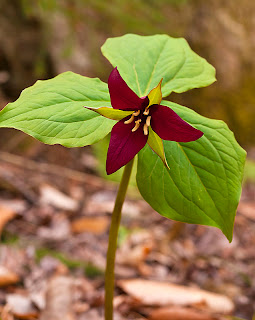



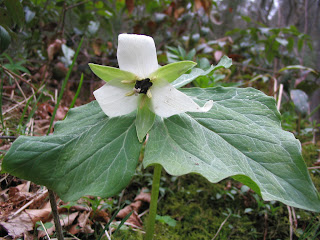

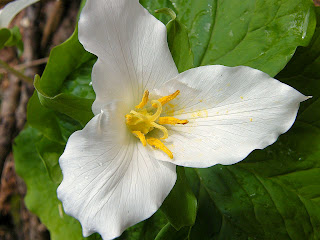


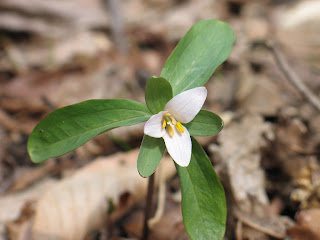


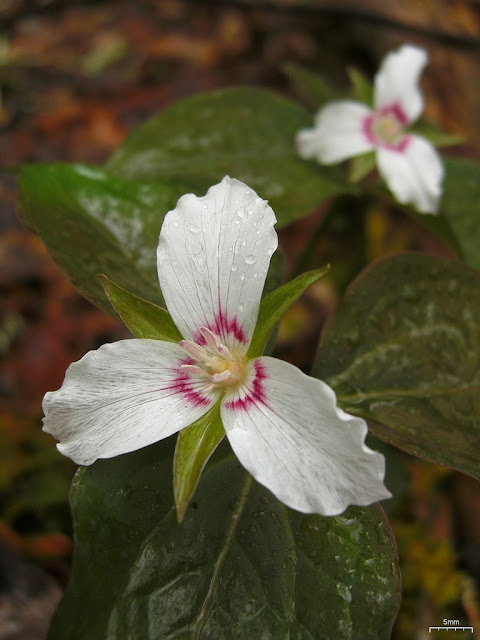
Nice job, Jim. Love the blog!
ReplyDelete